Commanders!
We're all used to seeing our tanks in action on the frontline, but how often do we see them in their downtime? In the run-up to Tankfest 2022, we've spoken with The Tank Museum's Mike Hayton to hear about his experiences as Workshop Manager restoring iconic machines and learn more about the ins and outs of tank maintenance.
Tankfest—running from June 24 through June 26—is the world's best display of historic moving armor, making this the perfect time to go behind the scenes. Join us in person or enjoy the action-packed live stream on June 26 at 15:00 CEST (UTC+2) too, so stay tuned!
Hi, Mike Hayton. Can you describe your role and what that involves on a day-to-day basis?
I'm the Workshop/Restoration Manager at The Tank Museum. With my experience and knowledge, I can advise the workshop whenever required. I’m still heavily involved with the Tiger 131 and display events such as Tankfest and Tiger Day.
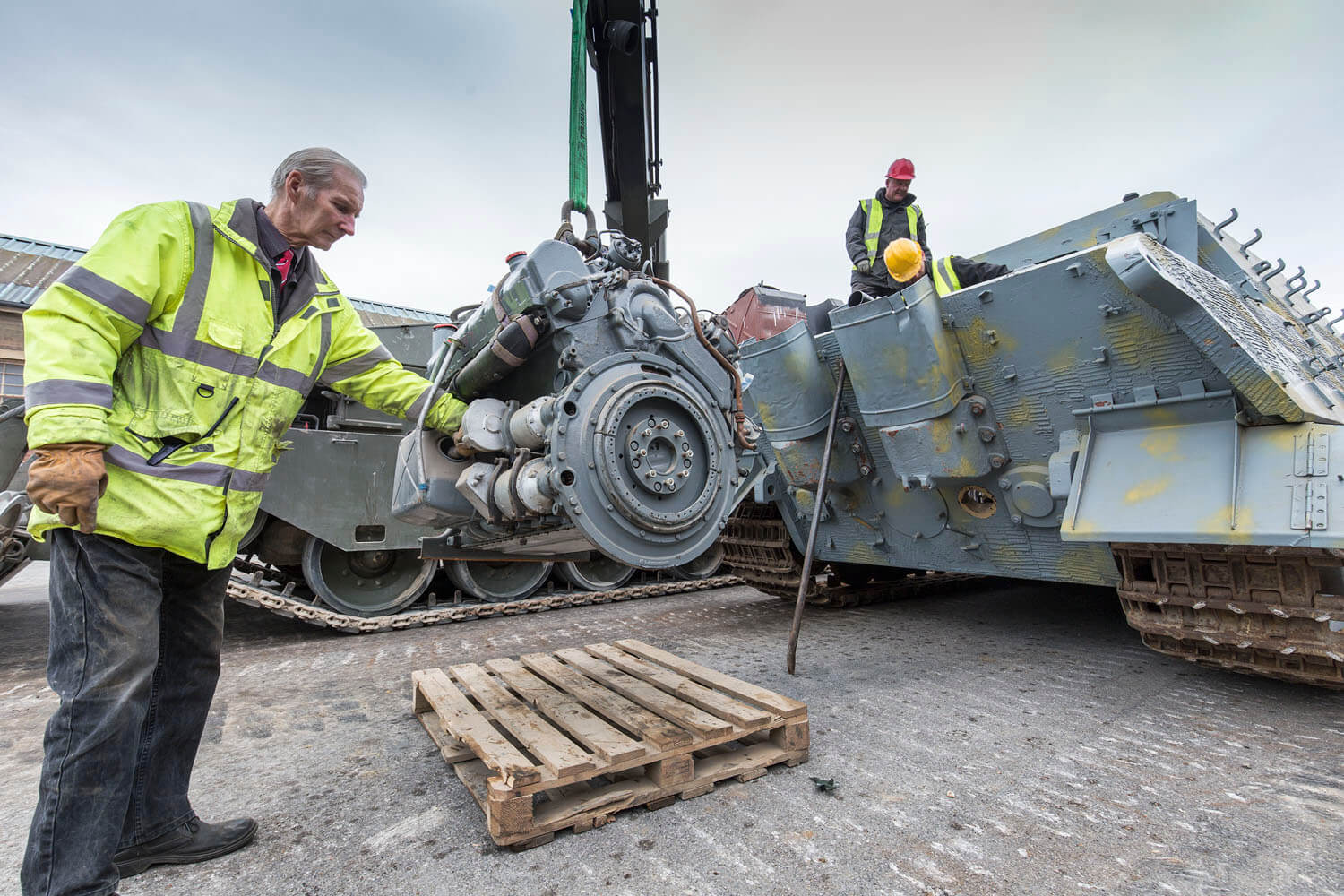
Mike Hayton, Workshop/Restoration Manager at The Tank Museum in Bovington.
What is the team’s background? Are there specialized roles within the restoration department?
The team is split up into two—one group focuses on historic vehicles and the other group does the day-to-day running of display vehicles. Half the team is original volunteers at the museum and most have a background in mechanics or the military.
Over the years, they’ve become extremely knowledgeable in certain vehicles. For example, ‘Buzz’ knows a lot about Sherman tanks and drove the Sherman in the Fury film. We’ve also got two apprentices—one does mainly machine work, the other works on most vehicles to gain experience.
"Of course, all these old tanks have no computers in them—it’s all nuts and bolts, and lots of swearing!"
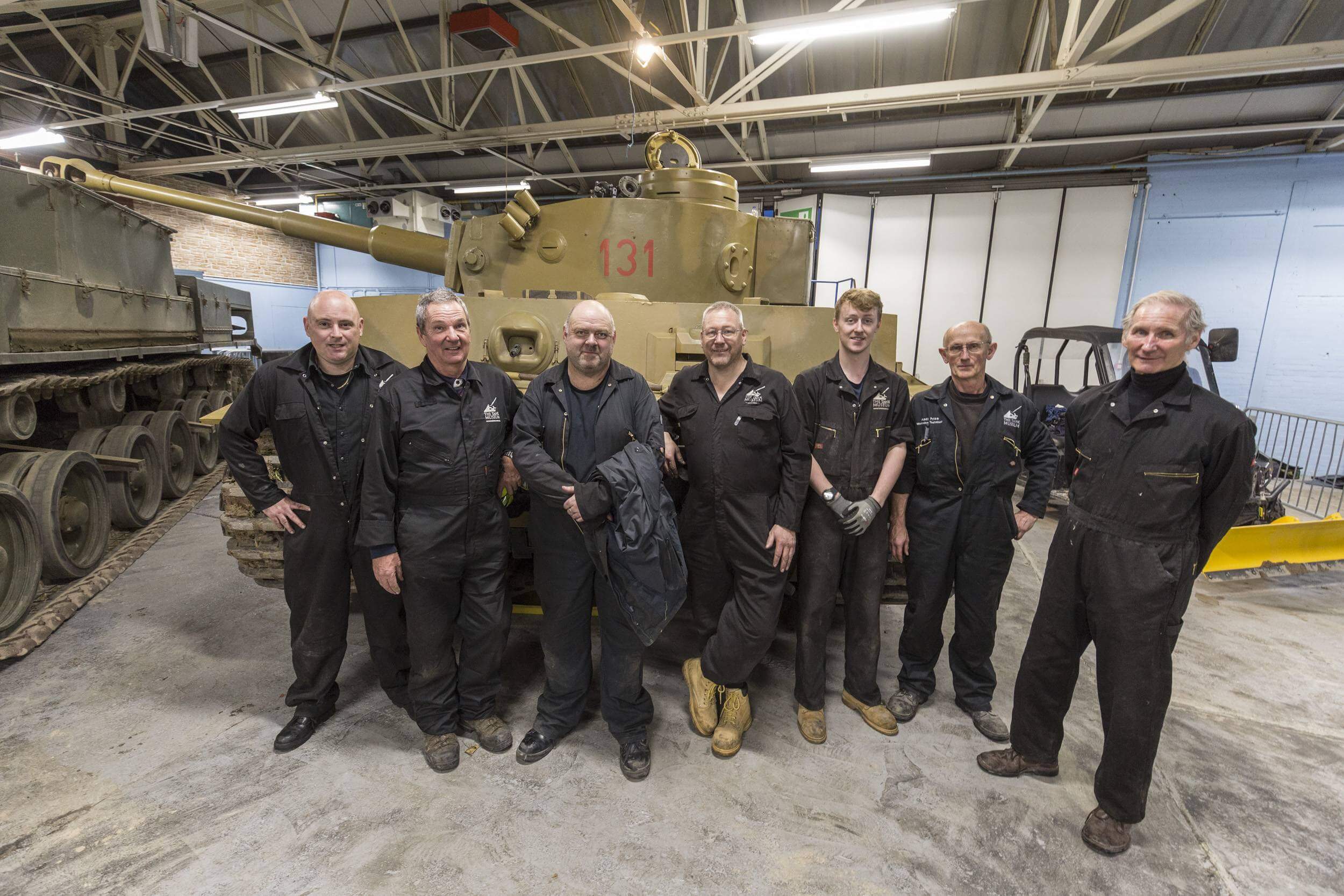
What is it about tanks? What is the allure for you?
My dad used to drop me off at the Tank Museum, so I spent a lot of time in my youth with tanks. That’s where I got to like them, but I also got an infatuation with tracked vehicles. Some people like airplanes, cars—I like tanks. So it all started back when I was even a teenager.
As the years went by, I bought my own tank—an FB432 Armored Personnel Carrier. We used to drive it on the public roads. It was well-known around where we live and we had great fun. I later had the chance to work with the Museum. I had my own business at the time, but it was too good an opportunity to refuse.
"Each tank has a smell of its own. I’ve been here long enough now that if someone blindfolded me and put me in a random tank, I could tell you which country it comes from."
What advice would you give to any young kids or budding tank enthusiasts who would love to do your job?
The major influence is if you’re mechanically minded or have an interest in mechanics. You don’t need to have a university degree to work on these older vehicles, as long as you are interested in the smell of a tank, are used to banging your head inside it, and so on. It’s been proved with our apprentices—they’ve come in and done very well.
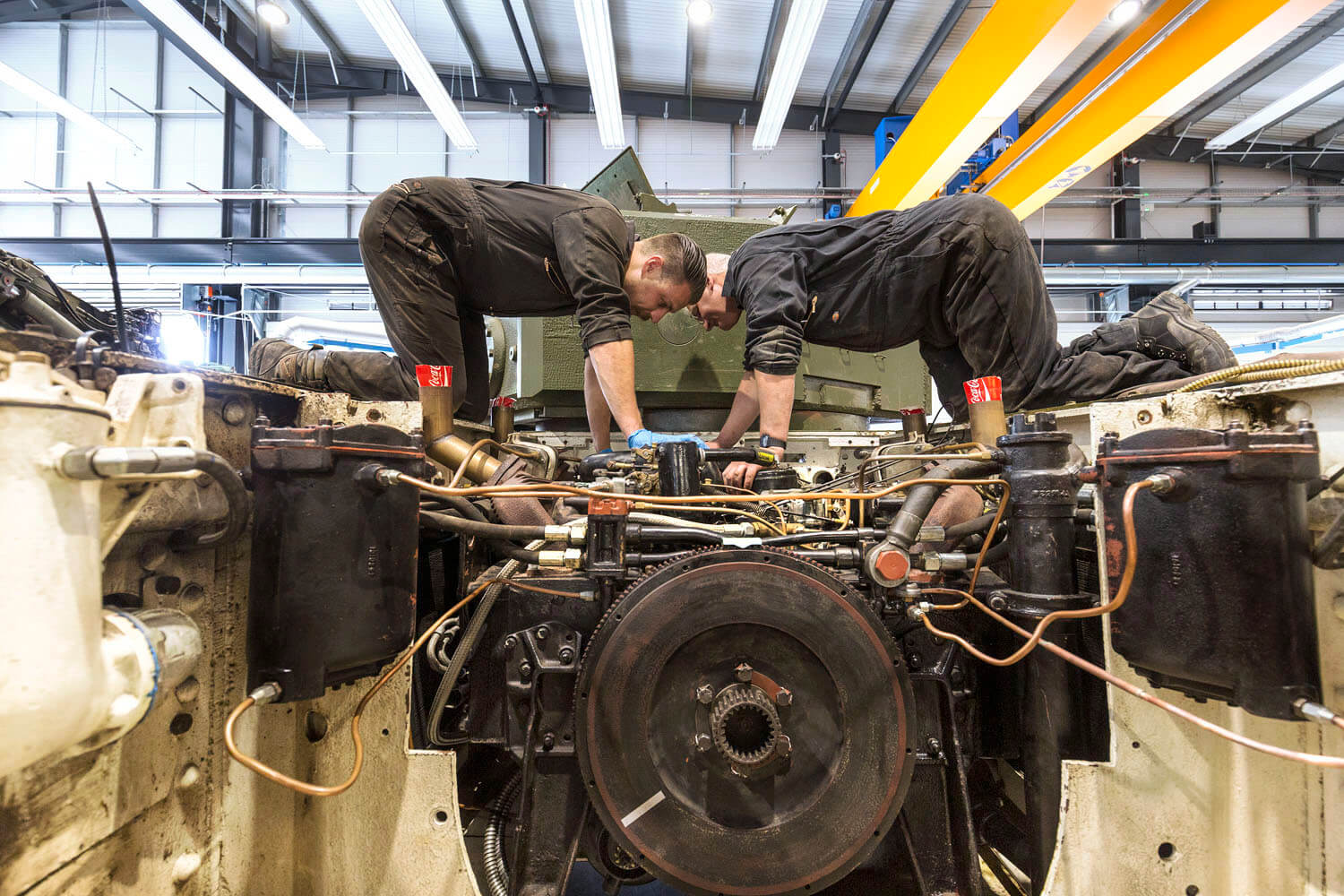
Is there a particular tank that is easier or harder to work on?
They are all challenging to work with to some degree—as you're essentially shoehorning big engines into small areas. In the mid-60s and 70s, much more thought went into the design of tanks. For example, the FB432 Armored Personnel Carrier has a 'pack' engine, which means you undo about four bolts and a few other things, and you lift the whole pack out. The engine, the gearbox, the radiators—everything is all in this big frame and you can put it outside the tank, put it on the ground, connect umbilical cords, and run the thing outside the tank. As time went by, the tank design meant it got a lot easier and that’s carried on.
They’ve even put rollers on the back of the engine of the American M60. You can roll the engine out of the back of the tank, put it on the ground and run it. The new Leopard tanks are easy to take the pack out, but are a lot more technical.
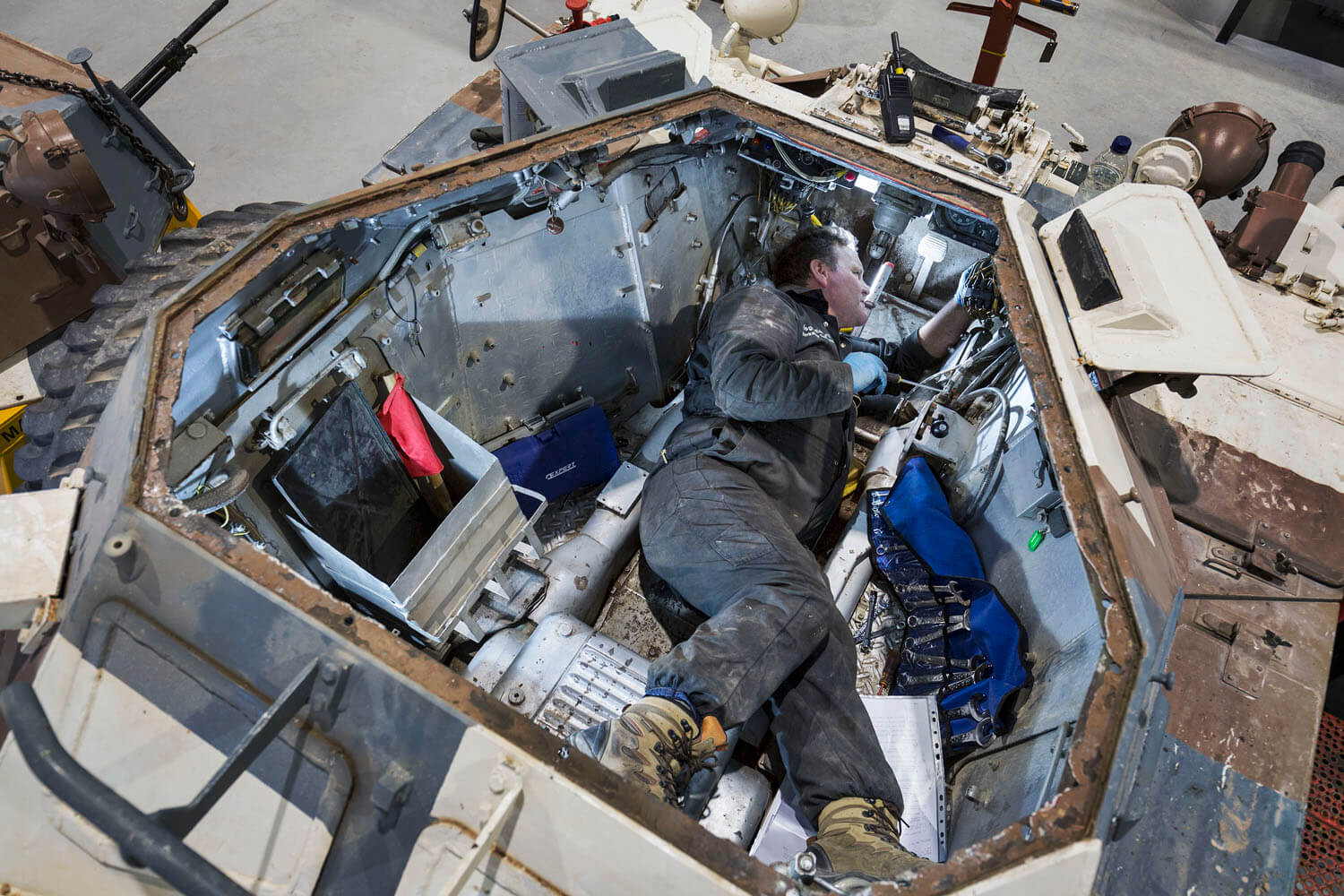
Do you favor historical or display vehicles?
I try to be as unbiased as possible, but favoritism comes with how easy it is to work on. We’re having trouble with our Churchill tank at the moment. It’s difficult to work on—the mechanics on the engine. You can’t help but compare it to the Panzer III, where you could take the engine out in the morning. The German tanks seem easier to work on, but they are more technical and more difficult to understand, especially the Tiger.
"It’s like a big Meccano set – very well thought-out and designed."
Is the Tiger 131 one of the most challenging tanks to work on?
In my experience, yes. It’s our major attraction, but we’ve had 100% reliability since I was responsible for it in 2004. Now we do a little bit less with it and it has been an uphill battle to keep it reliable. We’ve had lots of headaches and soul-searching and so on, but we’ve managed to do it. And I’m quite proud of that.
The same with the Panzer III—they are the two tanks that I’ve put the most time into because they are the biggest draw for visitors. Again, the Panzer III is 100% reliable—we’ve never had to tow it back.
Check out our recent video on how to run the Tiger 131 with Mike Hayton and our very own Richard Cutland.
How often do you run the tanks on display in the museum? And what sort of issues arise from a tank sitting still for months at a time?
The museum has split the collection into two fleets—the historical fleet and the running fleet. The running fleet features tanks we run throughout the summer or use daily.
Roughly a third of the tanks in our collection work. Another third would work if some time and effort were spent on them. The other third are likely to be too expensive jobs to take on. We tend to use a very small number of the same tanks per event over and over again, because they are the ones that perform the best.
The same with the historical fleet. There are probably about 20-25 vehicles that we regularly run once every few months, for a film, or display, such as Tiger Day or Tankfest. The Chieftain main battle tank is used or worked on pretty much every day. On some of the tanks, the tyres or parts are originals—70 or 80 years old—so I prefer to run them as little as we can. There is a general concern of track mileage.
"It's a fairly strict regime on limiting the running of historic tanks as much as we possibly can, but the museum also has to survive."
On the flip side, do you need to run the tanks to ensure they don’t ‘seize up’?
Yes. For example, the Tiger is displayed twice a year. Between then, we would start the engine, reverse it out of the hangar, ready it up, get it warm, and put it back in again. It keeps it ticking over.
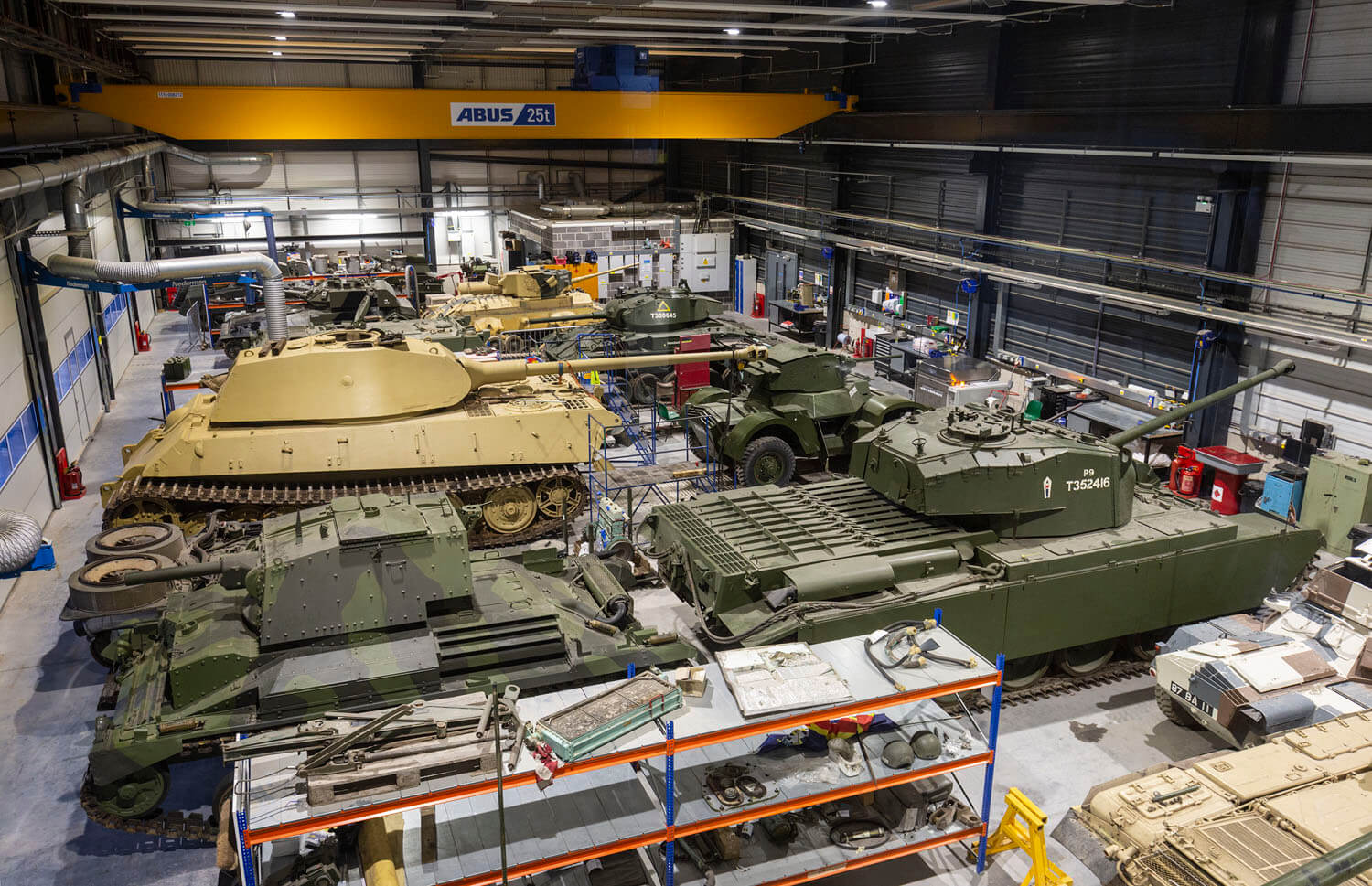
What are some of the dangers you face in the restoration workshop? Any horror stories?
Two of the main dangers to the museum are asbestos and tritium—the reflective materials on instruments so you can see them at night. Some of the vehicles in the museum have had to be sealed so they are not a danger to anyone. It's something we’re always aware of and we’ve had lots of training to ensure we know how to handle these substances and instruments.
We were out in the Tiger once and due to do a display. The driver reversed out and the tank stopped. Someone had forgotten to turn the petrol on. We turned it on, the driver pressed the button, and there was a huge flash inside the tank and lots of smoke. The driver was out of the hatch in about two seconds flat. It turns out the wire had become loose on the earthing to the hull and had flashed through to the box. The whole tank was electrically dead. Five thousand people were waiting to see this tank within 10 minutes, so we had to use the inertia handle for the first time.
What value do you think the Tank Museum and restored vehicles offer to visitors?
For me, young children especially need to see what their grandfathers or great-grandfathers did when they were in the war.
"It's often talked about and taught in schools, but I think the museum is a great place to bring people to earth. The videos and stories of tankmen and crew of what they went through, what they ate, and so on, is fantastic to get this message across."
And also one of peace—who’d want to be sat in one of those with a great big gun firing at you? So in that respect, I think it’s a great place.
What steps are there to restoring a tank?
If the tank has been stood for a long time, there are several stages we go to. If it’s been used before, we check the oil, water and so on. If it’s been stood for a couple of months, there’s a lot more to do. For example: we need to make sure the pins that hold the tracks together are held in place, the track tension, tires, wheels, sprockets, any wear or leaks.
"If a vehicle has been stored for two or three years, it’d be a much bigger job. Maybe taking the engine out and doing deeper work with cameras inside the engine and so on."

How do you prioritize one project over another? Is it as simple as the cost and budget restraints?
The main consideration is supply and demand. For example, the Chieftain main battle tank is fitted with trackpads. When those wear out, there aren’t any to replace them. The same goes for the Challenger I.
We’re also finding that with early Challengers and Chieftains, it’s difficult to find the right electricians to work on them, because the electronics on them are horrendous. If we had more spare track and engines, we’d run them more. Fortunately, we’ve been given spares with the Chieftain, but it's becoming a problem with most modern service, as parts are no longer available.
"It’s a balancing act. You can’t be seen to be boring. We have to draw people in with a great display of vehicles. There’s not a shortage of parts for some tanks. But you can tell how rare the bits become based on the prices on the market."
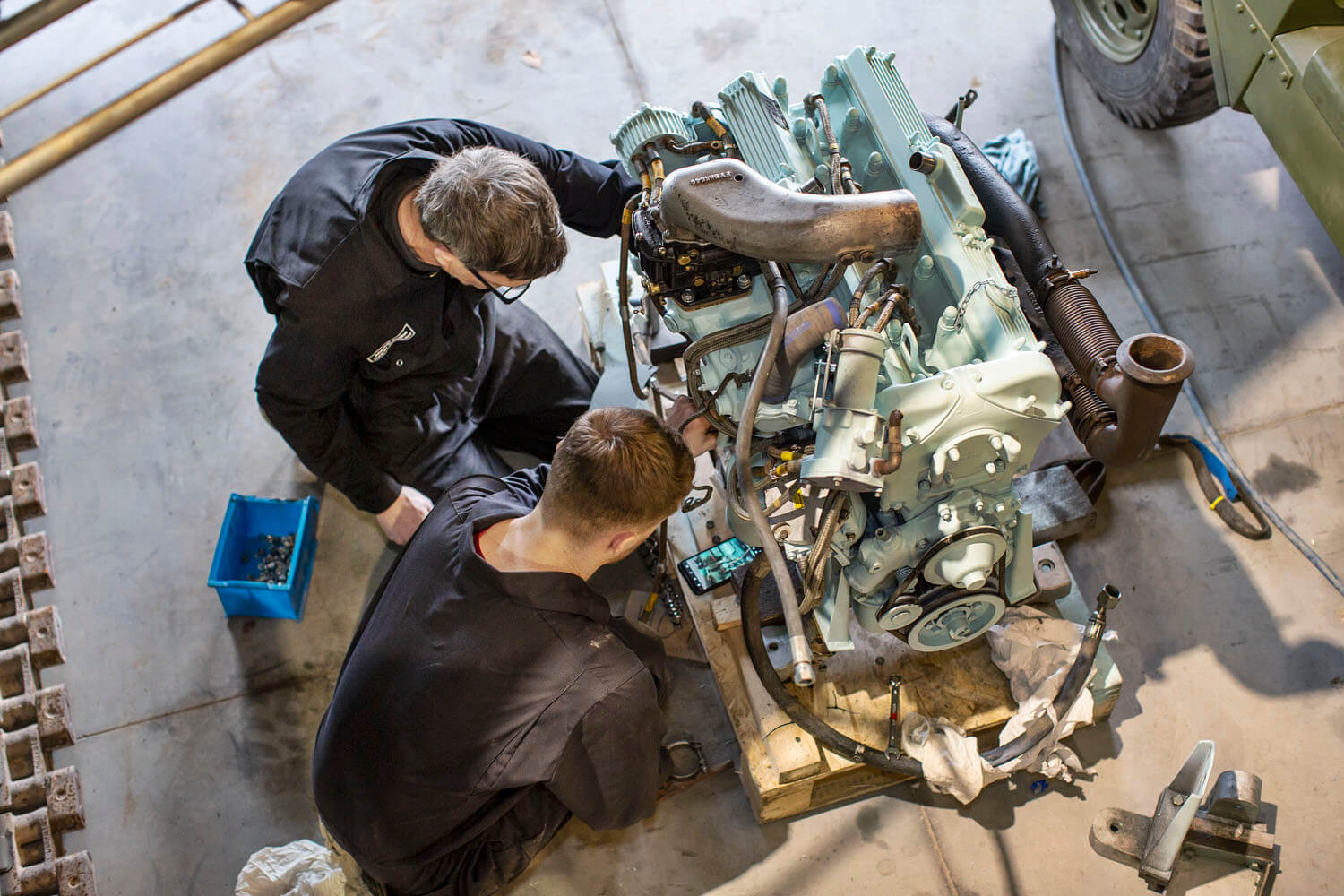
Is your team responsible for painting vehicles? If so, can you elaborate on what it takes to paint a tank?
Yes. I’ve been heavily into restoration and restored classic cars over the years and I’ve always gone to a lot of effort to ensure we have the right colors. Painting a tank in the wrong colors is unforgivable. I’m proud that the tanks I’ve painted are historically accurate.
The three major manufacturers—America, Britain, and Germany, have very different ways of painting. The German’s use RAL colors—even though they are different shades depending on where they were made (as there were other manufacturers), if you know it’s RAL 7 for example, you know it will always be that color. It’s fairly easy with German tanks to be accurate with colors, and the colors are still used today on cars. With British tanks, they were painted in, for instance, ‘light straw’. The tank manuals give the colors, but not necessarily the codes. Generally, British tanks are ‘light straw’ or ‘dark green’. The American tanks use drab colors, as well as other, which are fairly easy to get. Fortunately, they didn’t have a vast range of colors as opposed to other nation’s tanks.
"We’re probably a leader in painting armored vehicles."
At one end of the spectrum, we have a First World War Renault tank. We sent some samples off to Lincoln University and they came back with a formula for mixing the paint. So we had it mixed, made, and painted exactly as it was in the First World War.
The Panzer III is painted in a color called ‘Honey’—what we call a RAL color, the German paint code—and it’s exactly right. Meanwhile, the Panther is an end of war color, when the German army had run out of paint and they only had primer.
We painted the Panther some years ago and put it in some trees for Tankfest. 50% of the people who walked past it didn’t see it. People later claimed that they hadn’t seen the Panther, despite walking a few feet or meters away from it. It’s quite satisfying to break the shape of the tank up so people don’t see it.
Now's your chance to literally watch paint dry! Watch our four-hour live stream from 2020 featuring the Jagdpanther.
What’s the one dream tank you would love to have in the workshop?
Without question, the British Crusader. It’s been on my bucket list for a long time. It’s got one of the most beautiful sounding engines ever. That would have been a tank I would have loved to have got working, especially as there are very few around now.
How do you usually fund restoration projects?
It comes from a variety of sources. For example, we received lottery funding and a grant from the Prism fund when the Tiger 131 was restored, including £30,000 towards a new gearbox. We have also received substantial gifts from individual donors and organizations.
Support the Museum
Help The Tank Museum and its capacity to restore historic vehicles and run events by donating to its Patreon or its dedicated Tankfest 2022 Tiltify campaign.
Donations via Referral Codes
New to World of Tanks? Create an account using this referral or use the invite code ALPACA and claim a rental
 VI
VI
Tiger 131
and a
 V
V
Matilda Black Prince
to try in-game! For every new player who signs up via this referral, World of Tanks will donate to The Tank Museum.
Do you have much of a chance to drive the tanks?
I have done in the past. I’ve been lucky enough to go to Sweden to drive tanks. I’ve driven the Tiger, but only a short distance. We’ve kept the drivers down to three people and, as many of the tanks are driven by volunteers, I want them to gain as much experience as possible. The Tiger is not the tank you can go out and practice with. It only goes out and does a display and back again.
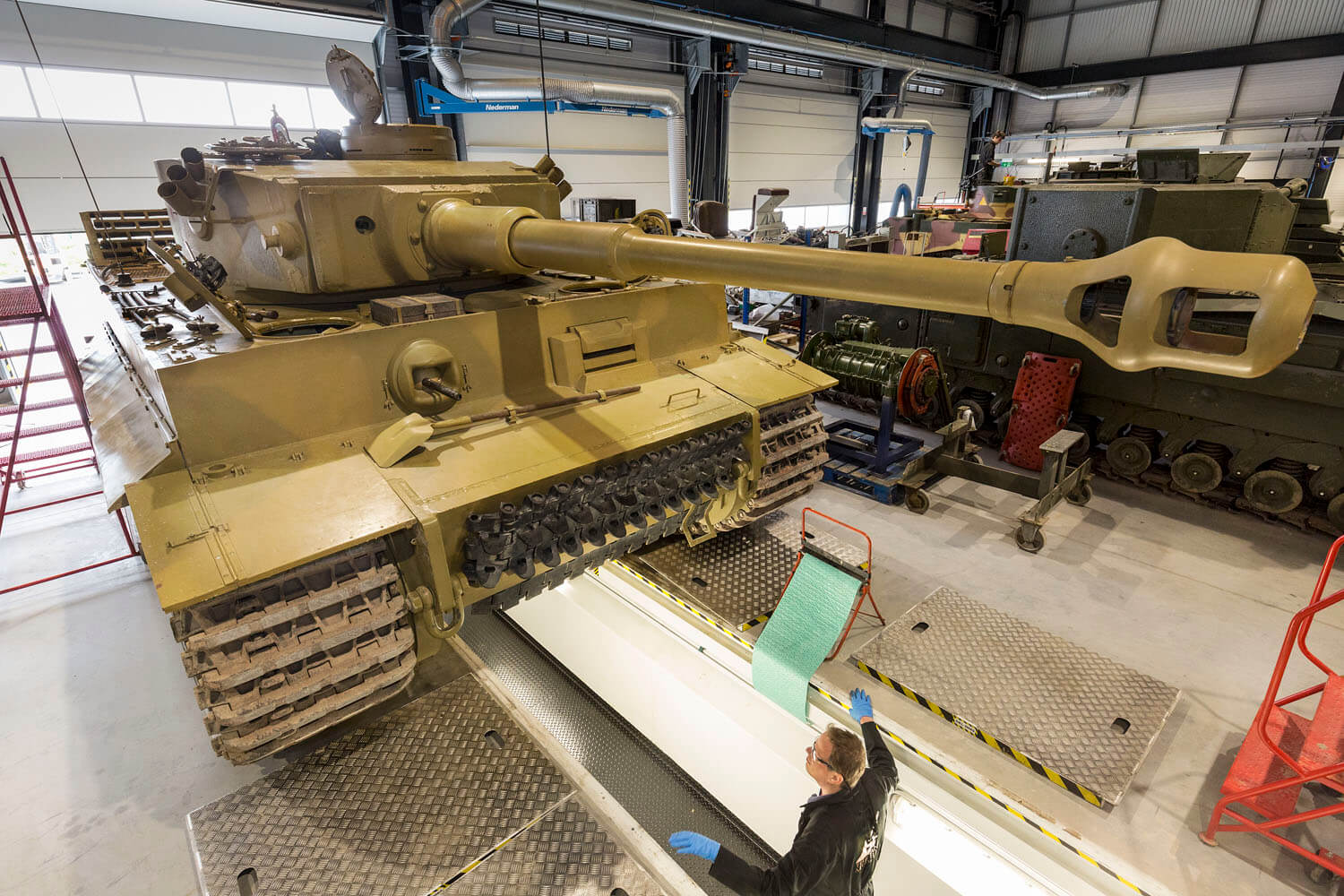
Any final comments or remarks?
It’s important to remember to put everything in the right context. Some people don’t want to go to a museum if it's full of killing machines. It is, but that's not what the museum's purpose is. The Tiger tank is built to kill people. But the tank is so beautifully engineered, and I can’t get enough of it from a workshop point of view.
I’ve been privileged to work on and go to London in the First World War era Mark IV. It’s quite some machine, and the stories bring it home to you.
"When you’re sat inside with the doors shut and the engine in between you and the next person, and there’s sparks and petrol dripping everywhere, you think about the people who went to war in these."
Tank Workshop Diaries
Hungry for more anecdotes and behind-the-scenes exclusives? You're in luck! The Tank Museum has a 17-part YouTube series covering everything from tank painting and recovering wrecks to showcases of specific tanks. The playlist is ever-growing, so get started and dive deep into The Tank Museum's workshop!
Thank You, Mike!
A huge thank you to Mike Hayton and The Tank Museum in Bovington for the access, support, and opportunity to speak to you about a shared passion!
Tankfest 2022: Don't Miss A Thing!
Don’t forget, Tankfest 2022 runs from Friday, June 24 through Sunday, June 26. See you in person or online for a weekend of action-packed fun!
Live Steam on June 26
Tune in from 15:00 CEST (UTC+2) and enjoy four hours of all the best Tankfest action from across the weekend, featuring exclusive historical content, live action-packed demonstrations, insights from expert historians, plus Twitch Drops rewards. More information incoming!
Roll out!
